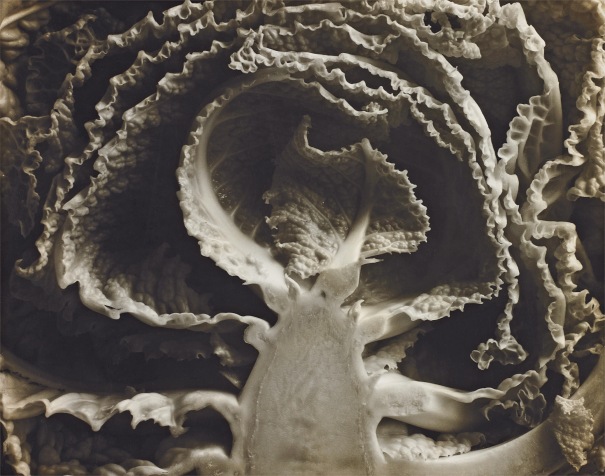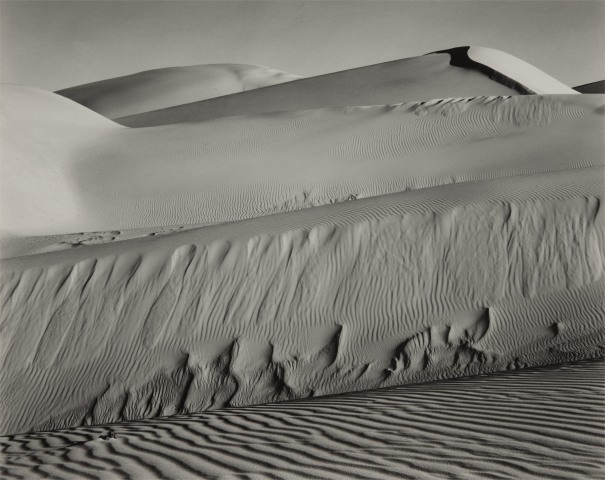THE FACE OF MODERNISM: A PRIVATE WEST COAST COLLECTION Edward Weston Portrait of a Woman 1916 Large-format gelatin silver print. 15 7/8 x 11 7/8 in. (40.3 x 30.2 cm) Signed 'Weston' and dated in ink on the recto.
Provenance Sotheby's, New York, 28 April 1999, lot 207 Private Collection, New York Catalogue Essay “Through photography I would present the significance of facts, so they are transformed from things seen to things known.”—Edward Weston, The Daybooks of Edward Weston Years before Edward Weston would embrace the Modernist aesthetic that came to define his oeuvre from the 1920s to his death in 1958, he was a successful portrait photographer with a small studio in Tropico, California. At the time, Pictorialism was the reigning photographic style, and Weston fully embraced the soft focus and idyllic subjects that it championed. Like his predecessors within Pictorialism, including Gertrude Käsebier and Edward Steichen many of his earliest photographs idealized feminine beauty and childhood with playful scenes set in pastoral landscapes. His work was admired by many of his contemporaries, and he was chosen to exhibit in the London Salon of Photography in 1914. Stylistically, Weston’s photographs prior to 1920 reveal but a tenuous connection to the sharp still-lifes, abstracted nudes and sensual landscapes that he would become known for; yet they demonstrate his lifelong interest in exploring and revealing the inner essence of his subjects, be they objects or figures. Exceptionally rare for both its early date and large size, Portrait of a Woman is a crowning achievement of this early period. Like a passing glance, the image creates an impression of the sitter instead of overtly revealing her. The subsequent sense of mystery invites viewers to continue gazing at the portrait. Just as Julia Margaret Cameron had evoked mythology in her 19th-century portraits, here, too, Weston evoked a similarly romanticized symbolism as a means of expressing the spiritual essence of his subject. In his discussion of photographing still-lifes, Weston stated: “I know I shall make some good negatives for I feel its form deeply.” (Daybooks, p. 37) Thereby, Weston revealed his need to have an emotional reaction towards his subject in order to capture it well. A successful photograph was not to be judged merely by its technical precision but also by its ability to evoke a expressive experience. Weston was a photographer who mastered all that he endeavored to do, evolving throughout his career and driven by his passion to get closer to the truth of his subjects. Most striking about Portrait of a Woman is the manner in which it embodies the Pictorialist aesthetic while also hinting at the direction that Weston’s photographs would soon take. Indeed, this period would prove to be a formative point within his career. As Sarah Lowe notes in an introductory essay to Edward Weston Life Work, by the 1920s Weston was “restyling his Pictorialist vision to accommodate ideas about Modernism.” (p. 23) Indeed, in the 1910s Weston was already beginning to experiment with many of the fundamental Modernist principles of line, shape, and abstraction. In Portrait of a Woman, viewers see these principles manifested in the single line that softly delineates the contours of the sitter’s face, neck and shoulder, a technique that Weston would later repeat in some of his most iconic still-lifes of shells and vegetables. By doing so, Weston isolated the form and allowed it to reveal itself organically. Indeed, Portrait of a Woman epitomizes the merging of Weston’s early Pictorialist sensibility with his evolving Modernist aesthetic. This print is extremely rare due to the large dimensions. Read More
THE FACE OF MODERNISM: A PRIVATE WEST COAST COLLECTION Edward Weston Portrait of a Woman 1916 Large-format gelatin silver print. 15 7/8 x 11 7/8 in. (40.3 x 30.2 cm) Signed 'Weston' and dated in ink on the recto.
Provenance Sotheby's, New York, 28 April 1999, lot 207 Private Collection, New York Catalogue Essay “Through photography I would present the significance of facts, so they are transformed from things seen to things known.”—Edward Weston, The Daybooks of Edward Weston Years before Edward Weston would embrace the Modernist aesthetic that came to define his oeuvre from the 1920s to his death in 1958, he was a successful portrait photographer with a small studio in Tropico, California. At the time, Pictorialism was the reigning photographic style, and Weston fully embraced the soft focus and idyllic subjects that it championed. Like his predecessors within Pictorialism, including Gertrude Käsebier and Edward Steichen many of his earliest photographs idealized feminine beauty and childhood with playful scenes set in pastoral landscapes. His work was admired by many of his contemporaries, and he was chosen to exhibit in the London Salon of Photography in 1914. Stylistically, Weston’s photographs prior to 1920 reveal but a tenuous connection to the sharp still-lifes, abstracted nudes and sensual landscapes that he would become known for; yet they demonstrate his lifelong interest in exploring and revealing the inner essence of his subjects, be they objects or figures. Exceptionally rare for both its early date and large size, Portrait of a Woman is a crowning achievement of this early period. Like a passing glance, the image creates an impression of the sitter instead of overtly revealing her. The subsequent sense of mystery invites viewers to continue gazing at the portrait. Just as Julia Margaret Cameron had evoked mythology in her 19th-century portraits, here, too, Weston evoked a similarly romanticized symbolism as a means of expressing the spiritual essence of his subject. In his discussion of photographing still-lifes, Weston stated: “I know I shall make some good negatives for I feel its form deeply.” (Daybooks, p. 37) Thereby, Weston revealed his need to have an emotional reaction towards his subject in order to capture it well. A successful photograph was not to be judged merely by its technical precision but also by its ability to evoke a expressive experience. Weston was a photographer who mastered all that he endeavored to do, evolving throughout his career and driven by his passion to get closer to the truth of his subjects. Most striking about Portrait of a Woman is the manner in which it embodies the Pictorialist aesthetic while also hinting at the direction that Weston’s photographs would soon take. Indeed, this period would prove to be a formative point within his career. As Sarah Lowe notes in an introductory essay to Edward Weston Life Work, by the 1920s Weston was “restyling his Pictorialist vision to accommodate ideas about Modernism.” (p. 23) Indeed, in the 1910s Weston was already beginning to experiment with many of the fundamental Modernist principles of line, shape, and abstraction. In Portrait of a Woman, viewers see these principles manifested in the single line that softly delineates the contours of the sitter’s face, neck and shoulder, a technique that Weston would later repeat in some of his most iconic still-lifes of shells and vegetables. By doing so, Weston isolated the form and allowed it to reveal itself organically. Indeed, Portrait of a Woman epitomizes the merging of Weston’s early Pictorialist sensibility with his evolving Modernist aesthetic. This print is extremely rare due to the large dimensions. Read More
.jpg)







Testen Sie LotSearch und seine Premium-Features 7 Tage - ohne Kosten!
Lassen Sie sich automatisch über neue Objekte in kommenden Auktionen benachrichtigen.
Suchauftrag anlegen